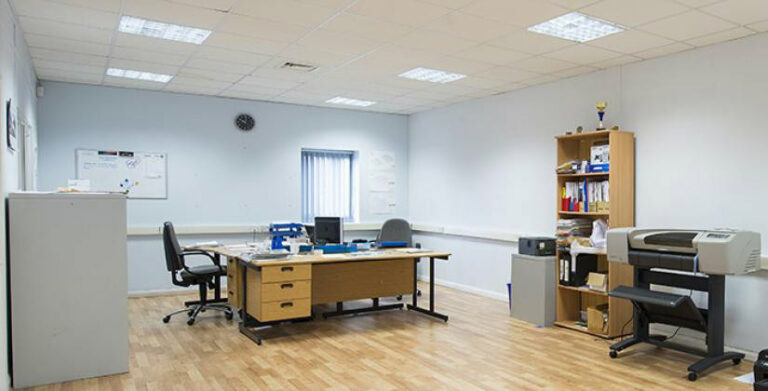Pensions time bomb for self-employed
The growth of self-employed is also creating a pensions time bomb, as most admit they don't have a pension and many expect to rely on the state pension.
There are now more self-employed workers than ever – they accounting for 15% of the workforce according to the latest data. While this is largely positive, given the fact that 43% of those who work for themselves are aged 50 or over, it’s surprising and rather worrying that so few have a pension. This post looks at the reasons behind this and why it makes sense to set up a pension, even if you’re not able to put aside much each month.

Most don’t have a pension
According to research from Prudential, just 17% of self-employed workers contribute to a pension regularly and less than 10% pay in on an occasional basis. This means that more than two thirds are not saving for a pension at all. The main reasons for this are that they can’t afford it or because they have other priorities for their money, like reinvesting it back into their business.
From the study, 29% expect to be reliant on the state pension when they retire and 6% believe they will continue to work rather than retire at all. However, 40% of the over 65’s have a long-term illness that limits their ability to work according to Age UK, so relying on your ability to work past retirement, particularly if you work for yourself, is risky.
Despite this, the Prudential study found that the self-employed workers who did save into a pension actually paid in more than their employed counterparts on average. The majority were paying into personal pensions, while 16% had company pensions and 17% have self-invested personal pensions or SIPPS.
Why you should start saving for a pension
- Financial advisors recommend it. Ask any advisor and they’ll tell you not to rely on the state pension to support you in later life – or in your ability to keep working past retirement. A survey by the deVere group of people over 50 also found that the number one financial wish is that they had saved more for retirement. Plus, according to research from Hargreaves Lansdown, less than half of people retiring from 2016 – 2020 will receive the full state pension. Therefore, it makes sense to help yourself in the future, by paying into a pension or making some sort of savings plan now.
- Don’t miss out on tax relief. As employed workers benefit from company contributions, which self-employed workers don’t receive, it’s been calculated that the self-employed miss out on a total of £91,500 on average. However, while you don’t get employer contributions, you can receive tax relief on personal and stakeholder pensions, which your pension provider should claim for you and add to your savings. So it pays to pay in, as it were.
- Auto enrolment is coming. While larger companies will already have started auto-enrolment, this year smaller companies will begin the process. Auto enrolment for companies with fewer than 30 staff starts from June this year and are staggered until 2017. Businesses set up after 2012 have slightly longer, but the point is that if you have to set this up for your staff, you should consider your pension at the same.
- Pension freedom reforms. With reforms to pensions (not including the state pension), you’ll have more freedom with what you do with your pension pot. There will no longer be the need to buy an annuity, and you have more access to it, so you could continue to invest it or cash part or all of it.
Types of pensions
There are many types of pensions, each with their own benefits. It’s best to get financial advice on the best plan for you, but here’s an overview.
- Personal pension plan. This is a way to personally save for your retirement. Generally, you put in funds that are then invested and managed by a provider, and you are given yearly forecasts on how much you can expect to have accrued when you retire. The money saved traditionally would be used to buy you an annuity – a regular income bought through an insurance company, but the pensions reforms, mentioned above mean this is no longer your only option on how to use your pension pot.
- Stakeholder pension plan. This is a particular type of personal pension that is available whether you work or not, with minimum standards set down by the government to protect you. These include limiting the amount you’re charged by the provider for administering your pension, no penalties for saving more, less or taking payment breaks and no penalties on transferring to another pension. Add in the fact that you can contribute as little as £20 per month and this makes stakeholder pensions an affordable and flexible option for most self-employed workers, particularly those with irregular incomes or low earnings.
- Self-invested pension plan (SIPP). This is more of a DIY pension fund and is ideal for those who want more active involvement in their pension. With a SIPP arrangement, you can actually choose what you invest in and manage these investments if you wish, or pay a professional to do it for you. This option gives the most flexibility and is best for those who have some investment experience.
- Small Self-administered schemes (SSASs). These are generally set up for owners of companies, providing pension funds for company directors or a small number of key staff. As with SIPPs there is more flexibility in where the money is invested
How to get the most out of your pension
- Keep an eye on your pension. This sounds obvious, but many people pay into a pension without checking how it is accruing. It’s there for your benefit, so make sure you know how much you’re be likely to receive later on in life.
- Check you’re making the most of tax savings. Make sure that your pension scheme is set up to automatically claim your tax relief for you. If you pay more than 20% income tax, you may be able to claim extra in your self-assessment tax return. If you have set up your business as a limited company, make sure your contributions come out of the company, rather than paying yourself and then putting the money into a pension, as this will incur national insurance contributions.
- Start early to save more. Even if you can’t afford to put much by, with cumulative interest, you’ll save more in the long run if you start saving for your retirement sooner rather than later. However, you can start saving for a pension up to the age of 75, so late is still better than not at all. You can always start off with a low amount and as your business prospers, increase your contribution.
- Get advice. If you’re nearing retirement age, take a look at the pros and cons of taking out annuity against keeping it invested and drawing an income from the fund. With the pension reform in April 2015, there’s more flexibility with what you do with your pension fund and with it, more opportunity to make the most of your savings.
Author:
BizSpace
BizSpace is the UK’s leading provider of regional flexible workspace. For over 20 years we have been offering office, studio and workshop units to a wide range of businesses in convenient regional locations across the country. We are owned by Sirius Real Estate, a commercial property operator, that is supporting us on a journey to significant growth.
More BizSpace News

Blog
Finding a Small Industrial Unit or Workshop to Rent
Let’s be honest with each other, finding a ‘perfectly sized’ industrial unit for your business isn’t exactly fun. It’s time-consuming,…
Find out more
Blog
Designing your ideal office: 8 top tips
Focus on comfort and practicality when designing your office space, considering layout, light, furniture, clutter and accessories.
Find out more
Blog
What is a Satellite Office?
Businesses are now finally able to return to some sense of normality in our post-COVID society. There has been plenty…
Find out more